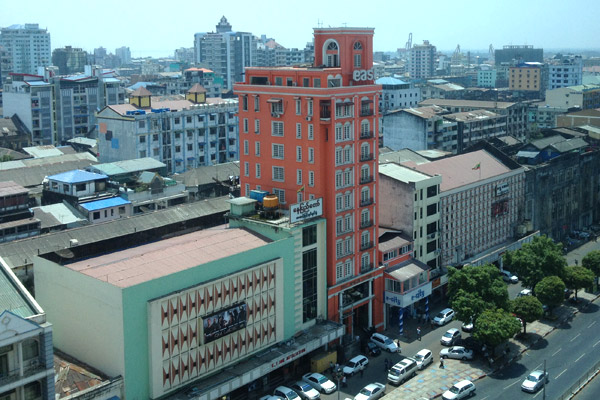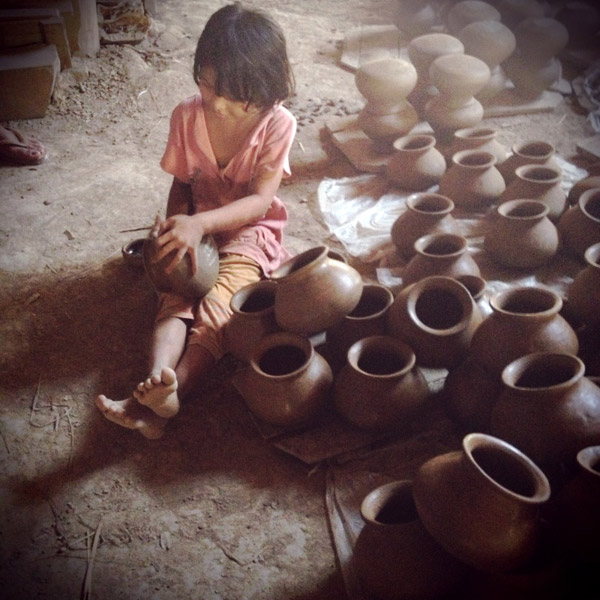First Impressions of Burma
 Shwedagon Pagoda. All photos by Kate Donnelly.
Shwedagon Pagoda. All photos by Kate Donnelly.
After years of isolation, Burma has opened its heart to the world. Kate Donnelly considers the path from turbulent history to modern renaissance.
YANGON, Burma – "This is Burma and it is unlike any land you know about," Rudyard Kipling wrote in 1898. And the more things change, the more they stay the same. Sweeping and significant changes have arrived in Burma, which is now recognized by the White House as Myanmar, the country's original name from the 13th century. After a half-century of notable turbulence and isolation, the Far East locale has opened its doors and its heart to the world, and it's worth the pilgrimage for so many intoxicating reasons, not the least of which are delicious and diverse cuisine and awe-inducing gold pagodas.

A TIMELINE
Let's agree that when you're traveling it helps to have a sense of the history of the place you're visiting, especially if you're part of the process that's helping it change. I won't sum up Burma's long, heavy, and complicated past, but here are a few 18th- to 21st-century highlights, with special notes about Suu Kyi, Burma's world-famous Nobel Peace Prize winner.
1885-1948: British colonization.
July 1947: Beloved politician Aung San, affectionately known as Bogyoke ("the general") and considered to be the father of modern-day Burma, is assassinated along with most of his cabinet by a rival political nationalist, U Saw.
1948: Burma gains independence from Great Britain with U Nu as prime minister.
1962: U Nu and company are ousted in military coup led by Gen Ne Win, whose Burmese Road to Socialism policy then led a staggering 49-year military rule.
1980s: Lots of riots. Thousands are killed in anti-government raids.
1988: Aung San's daughter, Aung San Suu Kyi, addressing an anti-government rally outside the Shwedagon Pagoda, calls for a multi-party democratic government and establishes the National League for Democracy (NLD).
1989: Suu Kyi is placed under house arrest on charges of trying to divide the military. The junta, led by military leaders, changes Burma's name to Myanmar. The junta places Suu Kyi under houses arrest.
1991: Suu Kyi is awarded Nobel Peace Prize for her commitment to peaceful change.
1995: Suu Kyi is released from house arrest after six years.
2000: Suu Kyi is placed under house arrest again and released in 2002.
2007: Buddhist monks lead the masses in a peaceful protest in reaction to fuel price hikes. Monks are beaten and killed; dozens of activists are arrested. Suu Kyi is allowed to leave her house to greet the demonstrating monks, her first public appearance since 2003.
2010: Once again, Suu Kyi is released from house arrest.
2011: Junta retires. US Secretary of State Hillary Clinton visits and meets Suu Kyi. The United States proposes to improve relations if democratic reforms continue.
2012: Suu Kyi's NLD wins a majority of seats. She meets with President Barack Obama at the villa where she spent 15 years (on and off) under house arrest.
FIRST IMPRESSIONS
The Name
Don't be confused: People use "Burma" and "Myanmar" interchangeably. (Read this brief explanation in the Economist if you want to know more.) While we're on the subject, the capital is no longer Yangon. It's Naypyidaw, which means "city of kings."
The Neighbors
This country is bordered by China, India, Thailand, Bangladesh, and Laos. Why wouldn't you make a side trip here from any one of those places?
The Icon
Aung San Suu Kyi the face and icon of Burma's democracy. Like a benevolent Evita of Burma, you see her photo everywhere: in shop windows and restaurants and ever-present on the streets on T-shirts, posters, and magnets.


The People
For all their turbulent history, the people of Myanmar are among the most open, gracious, and distinct I've encountered traveling. Locals are genuinely kind and sincere. And for all extreme hardships they've endured, they're proud people.
The Jet Lag
Circadian rhythms beware — the time zone can best be described as just plain wacky. I came here after a sojourn from Hong Kong, which is 90 minutes ahead of Burma. This meant I was ten and a half hours ahead of the United States. It's the "half" that I had to love.
The Comfort Zone
Did I feel safe? Yes, but I was with a small group of responsible people. Crime, especially of the violent nature, against foreigners is low, as the Buddhists are generally extremely peaceful. Theft is also not a societal problem, as Buddhists practice honesty. As always, stay vigilant and use your best judgment. How did I feel in Myanmar? I spent a lot of time wrestling with the country's politics and the deep-rooted history while trying to maintain hope for the promise of change.
Shaky, unscripted power outages occur everywhere, though my hotel room at the Traders Hotel only flickered and dimmed for a moment. The unreliable infrastructure served as a reminder that I was somewhere that's been off the grid for a long time — somewhere that's fluttering and fighting for its transformation.

FOR YOUR BEDSIDE TABLE
Letters from Burma, Aung San Suu Kyi
The River of Lost Footsteps: A Personal History of Burma, Thant Myint-U
30 Heritage Buildings of Yangon, The Association of Myanmar Architects
Burma VJ: Reporting from A Closed Country

